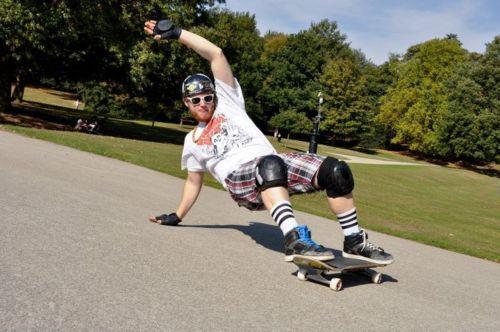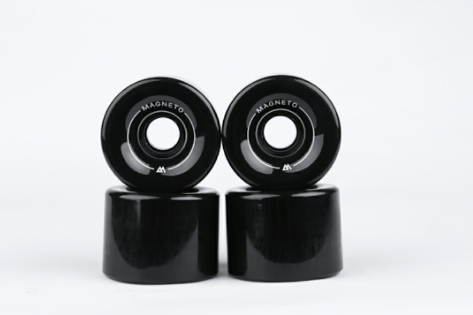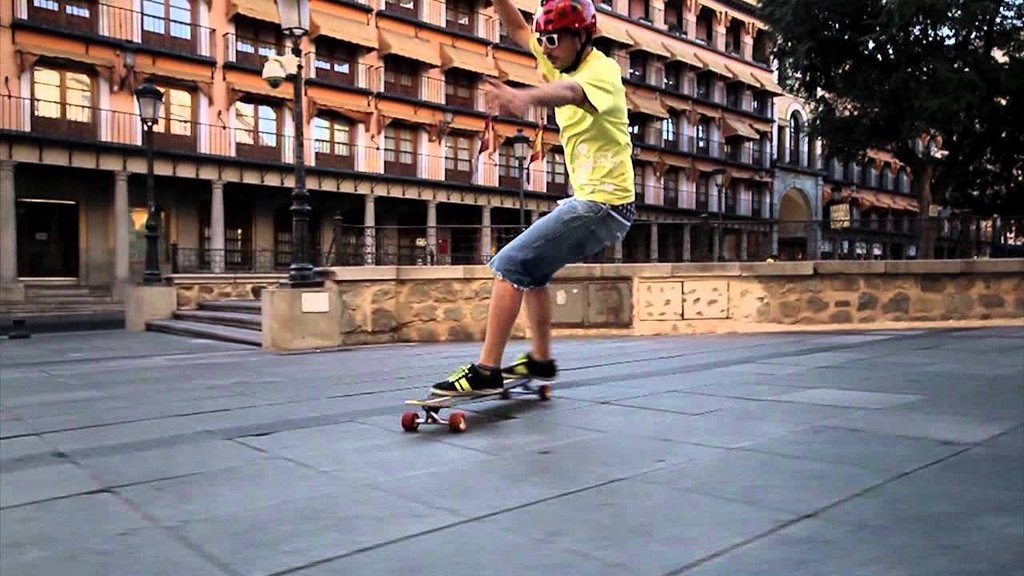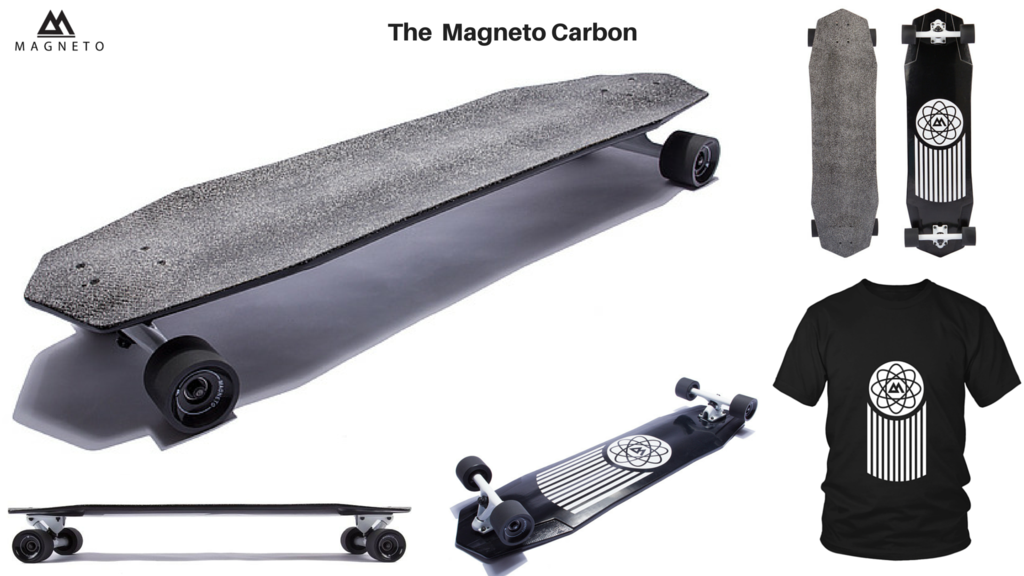You’ll learn about everything Downhill here from Downhill Longboards, technique to safety gear.
Are you tired of cruising? Did you bomb that neighborhood hill and fall in love with speed? Many of us have, and that’s why we do downhill. Downhill longboarding is at the core of what makes the longboarding community exciting and adrenaline-pumping. It’s at the core of hardcore sports and definitely, absolutely makes you a much more exciting person than who you might have been before.
But sometimes, you need some help to get started. And this is what that’s for; to get you, the common, everyday cruiser, into going fast and mingling with the rest of the longboarding community. Here are 10 steps to becoming a downhill longboarder.
I know, I know. Everyone keeps telling you to get a helmet but you don’t think you need one because you’ve never fallen. Bull! You absolutely need a helmet and some other very important accessories if you are going to learn and embrace downhill longboarding as a sport. You’ll need the following:
Make sure that your helmet is dual-certified, and from a trustworthy manufacturer. For now, you’ll need a half-shell. Skateboarding half-shells have padding all around your head, especially in the back and front, unlike bike helmets which protect the top more than anywhere else.
Slide gloves are available from most longboard manufacturers and skate shops. These are absolutely necessary for sliding and will protect your hands in case of a fall. To increase their durability, tape the fingertips with duct tape before skating. They will last 3 to 4 times as long.
Strongly recommended. Get hard caps so you can fall onto them and slide to a stop if necessary. Knees are more important than elbows. Impact shorts are also nice if you’re planning to push yourself very hard.
Making slide gloves:
Some people would rather not shell out 30-50 bucks for quality slide gloves; not to worry, there is a solution! Slide pucks are right around 10-15 dollars, and all you need is some well-fitting, durable gloves, and some fuzzy-side velcro adhesive tape. Assemble according to a picture of slide gloves. Make sure it is high-quality velcro tape; if not, the slide pucks may get ripped off mid-slide, ending with a bad case of oh boy, where’s my puck?
As with progressing in any sport, you must be able to walk before you run. Longboarding proficiently requires more skills than just the average cruiser might have. You should be able to push reliably (meaning that you don’t trip over your wheels or feet anymore), be able to stop on a dime (using foot braking or further means), and have supreme control over your board.
Keep in mind that stopping is the most important skill to know, whether you are doing downhill or not. It keeps you safe, it keeps others safe and most of all, it’s convenient. Some drills to help you out in case you don’t know how to practice quite yet:
- For carving, take a straight road, push to a decent speed, and make long, spaghetti noodle turns from curb to curb. As you get better at this, make your carves sharper and narrower, until you find a good rhythm and width. This will become almost second-nature once you get good at it.
- For stopping, decent a hill while foot braking. Do this once a day for a week, and you’ll have all the muscles you need to keep a footbrake out for a while. It’s important that you’re able to stick a footbrake out at will, as it may at some point be a life-saver.
- Know the anatomy of your board.
Half of downhill longboarding is actually what you do outside of actually skateboarding with your feet on the board. In fact, a very large, major portion of downhill is tweaking your gear so that it’s the best it can be. And to do that, you need to have an extremely good grasp on the anatomy of your longboard, how the parts work, and where to source the parts you need to upgrade your board. You should know in-depth about the role of parts on your longboard including:
- The deck
- The trucks,
- The wheels,
- The bearings,
- The bushings,
- Footstops, grip tape, and other miscellaneous items.
Generally speaking, a cruising setup isn’t well-tuned. At walking or running speeds, there can be a large margin of error. However, at higher speeds, such as the speeds at which people usually downhill at, the tiniest inconsistencies in gear will affect the quality of your ride; as an extreme example, it may even end in injuries.
- Know how to upgrade your Longboard
As said in the step before, a cruising setup isn’t well-tuned. In order to make a competitive-enough setup out of a cruising setup, you must do a few crucial things:
- Make sure your deck is speed-stiff,
- Make sure your deck has downhill concave,
- Make sure your trucks are from a trusted name-brand company,
- Tune those trucks to your weight with bushings.
These four things are excruciatingly important because they are basically what allows you to do the maneuvers and shenanigans that downhill requires you to do, like sliding, going fast and staying stable.
The stiffness of your board is important because flex amplifies bumps and wobbles in your ride. This can be deadly, so we try to keep things as stiff and responsive as possible. A downhill concave is usually a steeper concave than a cruising board’s concave. It’s enough that it is efficient in helping you grip the board and also push against it in times of sliding. However, it should be comfortable. There are over 7 or 8 types of concave; your choice in concave is preferential and don’t let anyone tell you that one is better than another.
Trucks are incredibly important as well. Trucks are the steering hub of your setup, and thus you should upgrade and tune them to your weight and liking. Make sure that you know how bushings work, and match them to your weight either by using a chart or using an internet application like bushingpicker.com.
Downhill is a very fast, intense sport in which you must make split-second decisions. These split-second decisions are what allow you to either make the corner and walk off feeling like the king of the world, or half stuck inside a guardrail, board nowhere to be seen as it just skipped off a cliff. To make these split-second decisions with a clear conscience, you need to absolutely know your board and your setup. You need to know:
- How much it turns,
- How it turns,
- How it slides,
- How stable it is,
- When it gets wobbles,
- How hard you can turn without sliding,
- How big it is,
- And tons more.
The bottom line is, you absolutely need to know everything there is to know about your board. This will require you to be on the same board sometimes for months in order to be familiar with it. Of course, when you get experienced with downhill longboarding, you will at some point be able to adapt your skills to other decks quite easily. However, for your first downhill experience, make sure you are comfortable and familiar with your board.
- Learn to turn, lean, carve, and apex.
Downhill longboarding is a gravity sport. That means that if you lose speed, it’s all up to gravity to make that speed back up again. However, it is our responsibility as the rider to help gravity gain us our most valuable currency: velocity.
Unfortunately, the roads involved in downhill longboarding aren’t simple straight lines. They’re filled with curves, squigglies, and corners that you need to traverse carefully and expertly in order to keep all your speed. This art of turning, leaning, and carving with purpose and reason is a huge component of this sport and is thus extremely important to master.
The art of taking a good line through a course is a learned skill. The best way to learn the best way through a certain course is to skate with more advanced riders, or watch videos of people skating the course. However, if this isn’t a possibility for you, know this: The best line through a course is the straightest line. It is the line that puts the least amount of g-force into your board and body, and conserves the most momentum.
Learn to slide on your Longboard.
This is most likely, the hardest and most dragged out part of your career as a downhill longboarder. Not only will you need to learn the few preliminary slides, but throughout your journey as a downhill longboarder, learning slides will be one of your primary focuses. There is an end-game; once you have built up your huge arsenal of slides, you will be able to skate any and every road in the world, theoretically.
But first, you will need to learn how to stop. Sure, it sounds trivial. I mean, you know how to footbrake, you know how to carve down to a near-stop from 20 kilometers an hour, but with downhill, we’re talking about speeds in excess of 50 kilometers an hour. And keep in mind, downhill longboarding IS an extreme sport. You will come across instances in your journey (assuming you do push yourself and try new, adrenaline-pumping things), where you will be faced with either hitting a wall or a car, or stopping using a slide.
The most basic stopping slide is called a Coleman, or a shutdown slide. A Coleman is where you grab over your back leg, grab the board, lean back and bust into a low, compact slide to shave off speed. You can find a good tutorial here:
It’s incredibly important that you not only can do this slide, but you can do it at any speed that you are downhilling at. That may be 40 kilometers an hour, or it may be 70 kilometers an hour. Also, always practice this slide. Keep it fresh in your brain so that you can use it whenever.
At this point, you are able to do grip runs, courses where sliding is optional and you can realistically “bomb” the hill all the way to the bottom. The reason why the Coleman came before doing grip runs is because, in the case of an oncoming car or collision, it’s important to be able to stop on a dime. To you know, save your life maybe.
There is a progression of slides, at least generally. It goes like this:
- Coleman Slide (Hands-down, grabbed, heelside slide)
- Coleman 180s (switch slide)
- Switch Coleman 180s (180 back from switch)
- Heelside Pendulum (Hands-down, grabbed/ungrabbed, undulating slide)
- Pendulum Shutdown (stopping slide)
- Pendulum Drift (speed-shaving slide)
- Toeside Slides (Hands-down, grabbed/ungrabbed)
- Toeside Pendulum Shutdown (undulating stopping slide)
- Both pre-drifts (Hands-down, grabbed/ungrabbed, speed-shaving slide)
- Drifts around corners (speed-shaving slide around a hairpin)
- Straight drifts (speed-shaving slide before a corner)
- Squat/Sit-down slides (No-hands, grabbed/ungrabbed slide)
- Squat drifts (squatted speed-shaving slide)
- Big Squats (long, fast, slide-jam style)
- Stand-up slides (no-hands, standing slide)
- 180s (switch slide)
- Stand-up drifts (speed-shaving slide)
- Big Standies (long, fast, slide-jam style)
Some tips for sliding:
- If a slide isn’t working out for you, go faster. The faster you are traveling, the easier it will be to unhook all of your wheels. It will also give you a longer slide so you can feel it out and learn better.
- When you are doing your first slides, exaggerate your movements, learn to unhook first. You can learn to get things under control later. Commit to your movements and smash those slides out.
Sliding will turn into an obsession for some; this means you are a freerider, rather than a downhiller. And it’s alright to like this; there are whole competitions designed for you!
- First downhill Longboarding experience.
You’re here! You are fully equipped to take your first downhill runs. Now, there’s not much to cover here, except some recommendations for safety and some rules about respect for your local community and city.
When you skate your first hill, make sure that you take it slow; don’t push yourself too hard, and gradually ease yourself into the downhill mindset. Downhilling is an extreme sport; it takes comprehension that is usually beyond the parameters of a normal person, and you are stretching your capabilities so that you can do this sport safely. Take precautions.
For your first downhill experiences, it’s very important that you don’t do them alone. One, the roads you’ll be skating will be better known by your local scene; they’ve been riding and skating it for years, probably. They’ll tell you where the cars jump out, where you need to drift, where you need to slow down, or where you can let go and just go as fast as possible. Also, bump-draft buddies are always welcome.
Don’t know where to find skate buddies? Facebook is your buddy here. Search some common keywords like, “CITY longboarding” or “longboarding CITY”. Chances are, your city or town has a pretty good skate scene in it, and was probably the start of something great. Other great places to look are Instagram, Meetup, and Google. Connect with people, and don’t be shy. As long as you aren’t acting out of line, skaters in this community are usually incredibly friendly and getting buddy buddy with them will only end in your self-improvement.
Another incredibly important part to this sport is respecting your local community. Your local community is what really allows you to skate your favorite roads, and so it’s important that you do your part when using those facilities. You should always pick up your trash, don’t act rowdy, be friendly to people who are passing and when there is a confrontation with police or your angry neighbors, try to explain, not confront. It’s important not only for the image of your local skate scene, but also the longboarding scene in general.
There isn’t much to guide you on after this; rather, you’ll have enough knowledge by now to guide yourself in your endeavor to become a better longboarder. Some tips to help you on your way though:
- Start upgrading your gear.
- Look into other decks; form an opinion about concaves and make it your goal to find what you like most in a deck.
- Research your ideal truck; look at higher-tiered trucks higher up in the budget ranges. These trucks will last you a long time and help you progress further.
- Look into buying a full-face helmet to really go fast.
- Keep working on your slides, and build a large arsenal of them. These will allow you to skate any hill from top to bottom.
- Race. Find races to compete in and get yourself some medals. It isn’t hard!
- Host community events and get ingrained in your local community.
The Magneto downhill Longboard. AKA The Tesla
![downhill-longboards]()
But always, always wear a helmet.
Ps we spend a lot of time writing awesome posts, your shares and likes make us carry on! So go on, if you liked this post share it with a friend.
Ryan, Magneto Longboards




